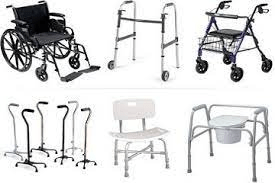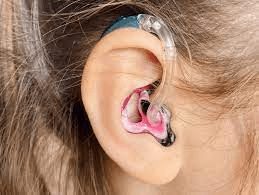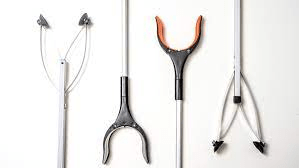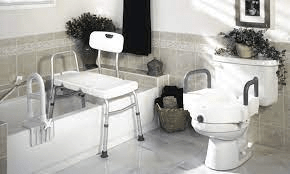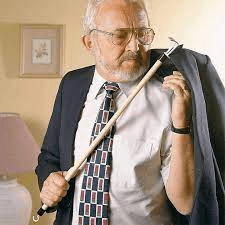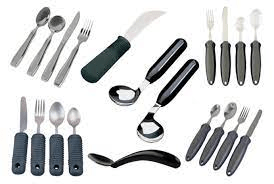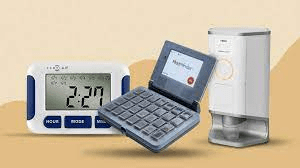Navigating the journey of aging is a unique experience for every family and every individual. As time passes, many seniors find that certain tasks, once taken for granted, become more challenging. This is where the question arises: “What are suitable assistive devices for elderly care?” These tools and technologies are designed to improve the quality of life, ensure safety, and maintain independence for the elderly.
The Importance of Assistive Devices
Before diving deep into the specifics of assistive technology, it’s vital to understand the role these devices play. Assistive devices are not just tools; they’re bridges to keep people living a fuller, more comfortable, and independent life. Whether it’s something as simple as a grip-enhanced opener or a sophisticated mobility scooter, these assistance devices make daily tasks more accessible and make daily tasks less strenuous.
What Are Assistive Devices for Elderly Care?
Walking Aids: Devices for mobility and assistance like canes, walkers, and rollators provide support and stability, ensuring safer mobility.
Hearing Aids: These are compact devices that amplify sound, for example, helping seniors and those with hearing impairment better engage in conversations and be aware of their environment.
Reading Magnifiers: For those with vision impairments, handheld or stand magnifiers can make reading newspapers, phone call, books, or labels much easier.
Reachers and Grabbers: These extendable arms with a claw grip device on the end help in reaching objects without bending or stretching.
Bathroom Safety Devices: Non-slip mats, grab bars, and shower seats can make the family and bathroom environment safer and prevent potential falls.
Dressing Aids: Tools like long-handled shoe horns, zipper pullers, and button hooks assist seniors older adults in dressing independently.
Adaptive Cutlery: Grip-enhanced and specially designed eating utensils help support those with arthritis or other hand mobility issues eat with ease.
Medication Reminders: Automated pill dispensers with alarms can remind seniors to take their medicines on time.
Communication Aids: For those with speech impairments, electronic communication boards or apps can aid and support the user in conveying messages.
Stair Lifts and Ramps: To make older people navigate multi-level homes or thresholds, stairlifts and ramps can be game-changers for those with mobility challenges.
Making the Right Choice
When considering, “What are assistive devices for elderly care?”, it’s not only about listing options but also about understanding the user and individual needs. It’s crucial to assess the unique requirements, challenges, and preferences of each senior taking care of elderly relative. Consulting with occupational therapists or elderly care specialists can provide valuable insights into making the best choice.
What is Assistive Technology?
Assistive technology is any device, equipment, gadget, device or gizmo that helps to bridge gaps in a person’s ability to live the full, independent and fulfilling life they want to. Assistive technology can help many different types of people in different ways, but for elderly people the main goal is to reduce stress, worry and reliance on other people and care systems and to help them to stay in their homes for longer.
Benefits of Assistive Device
Assistive technology can help so many types of people in different personal ways, whether it be someone living with dementia to remember certain personal things, a stroke survivor to communicate, a visually impaired person to access the phone or internet, or even just a healthy older person to help secure their home.
Assistive technologies and devices that are most likely to help your elderly relative are usually electronic gadgets. Health can be improved with medication reminders, pill dispensers, and telehealth systems. Independence and comfort might be focused on with virtual assistants, visual and communication aids, and memory aids. . Assistive technologies, technology devices and many devices can also be used for home safety and security – smart smoke alarms and doorbells, automated lighting and water-overflow devices to name a few.
What Are Assistive Technology Devices?
Assistive technology devices span a broad spectrum, from simple everyday tools to advanced computer-based health solutions. They can be categorized based on their age and their functions:
- Mobility Aids: Wheelchairs, prosthetics, crutches, canes, and scooters fall into this category, ensuring individuals with mobility impairments can navigate their environment.
- Hearing and Vision Aids: These include hearing aids, cochlear implants, Braille e-books, screen readers, and magnifying applications. They cater to individuals with hearing or vision impairments.
- Communication Devices: Augmentative and Alternative Communication (AAC) devices, such as speech-generating devices or picture communication boards, aid individuals with speech and language disorders.
- Computer Access: Special keyboards, mouse alternatives, voice recognition software, and screen readers can make technology more accessible to those with physical or cognitive impairments.
- Adaptive Learning Tools: These include text-to-speech software, bookshare solutions, and adaptive keyboards to help individuals with learning disabilities.
- Environmental Control Units: Devices that allow individuals to control various aspects of their environment, such as lights, televisions, or thermostats, often using switches or voice commands.
- Daily Living Aids: From specialized cutlery and drinking cups to button hooks and long-handled sponges, these are designed to help individuals perform everyday tasks independently.
What Are Adaptive Tools?
Simply put, adaptive tools or assistance are specialized devices or equipment designed to aid individuals in performing tasks daily activities that might otherwise be difficult or impossible due to certain disabilities or physical limitations. These tools span a wide range of technologies, from daily living aids to technologically advanced solutions.
What Are Video Doorbells?
Video doorbells, sometimes referred to as smart doorbells or camera doorbells, are devices installed in place of or alongside traditional doorbells. They come equipped with cameras, microphones, and speakers, allowing homeowners to see, hear, and communicate with whoever is at their door, often even if they are not home.
Conlusion
In the realm of elderly care, personal assistive devices play an indispensable role. They are more than just gadgets; they are lifelines to a dignified and independent life. As technology advances and age further, we can expect even more innovative technology solutions for loved ones to emerge, further enhancing the quality of life for seniors worldwide.
